A Quick Way to Test Your Reception – No Antenna Required!
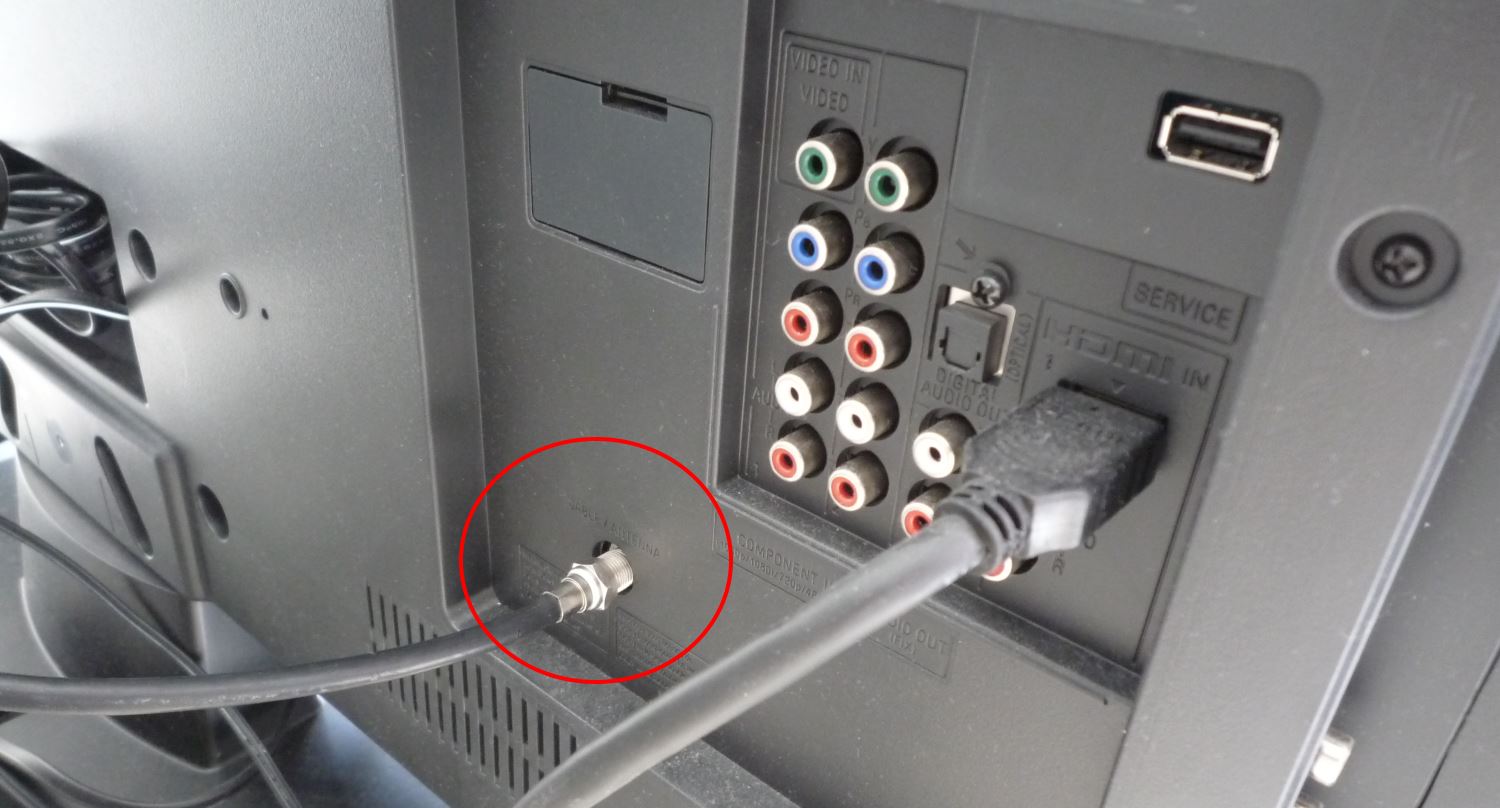
Here is a way to see if you can receive digital broadcast TV signals. You can do this even if you don’t have an antenna and don’t want to buy one right now. Note this is just a test, not a permanent set up!
Before you start, type in your zip code into the Station Finder to see what channels are available in your area. If you got green or yellow channels, you can proceed. If you got only red channels or none, there are no broadcast TV signals in your area, and you won’t be able to use an antenna to get TV. But, you can use low-cost streaming TV services that are cheaper than cable.
You Will Need Three Things:
1. A TV that is capable of receiving digital TV (DTV) signals. Most flat-screen TV’s made in 2006 or later have this capability. (Old tube-style TVs will need a converter box.)
2. A length of coax cable. This cable is usually white and the ends look something like this:

This cable might already be plugged into your TV. If so, unplug the other end and leave the end plugged into your TV. Unscrew the cable from whatever it is plugged into by rotating the hexagonal cuff counterclockwise. The shorter the better in this case (a few feet is ideal).
3. An improvised antenna. Any piece of wire or cable that is not shielded or grounded can work. Here are some examples of cables that can work as a “quick and dirty” antenna:
- power extension cord
- lamp power cord
- wire coat hanger (with the paint scraped off at one point so it can make contact with the coax cable)
- piece of wire (a few feet long will do)
Here are some types of cables that won’t make a good antenna:
- USB cable (it is shielded)
- another coax cable (it is shielded)
- audio cables (RCA, 1/4″ instrument, etc. These are shielded)
Now, Let’s Begin!
Take the length of coax cable and screw it into the CABLE/ANTENNA input on the back of your TV. There is usually only one plug where this cable will fit. If there is already a cable plugged in there, unscrew it at the other end and use it for this experiment.
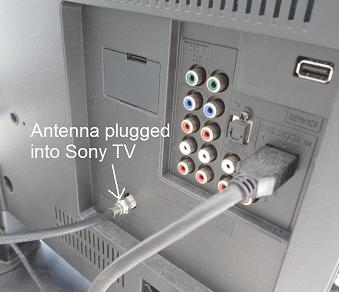
Leave the other end of the coax cable dangling for now.
Turn on your TV and go to the setup menu to put your TV in “Antenna” mode (as opposed to “Cable” mode). This is what it looks like on my Sony Bravia:
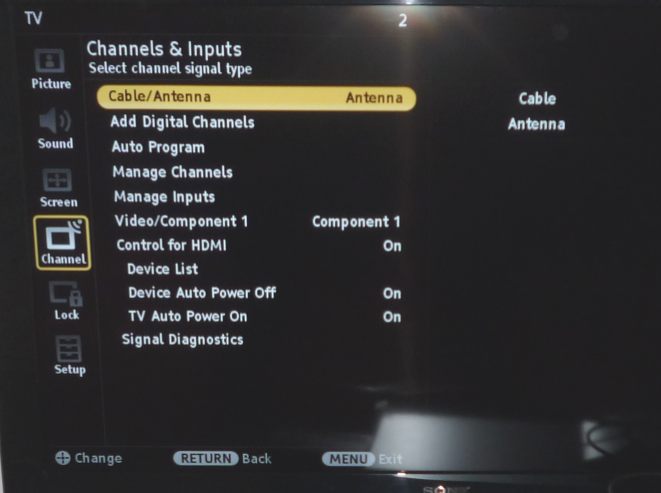
Next, go to the menu option on your TV that says something like “scan for channels”. Here is what it looks like on my TV:
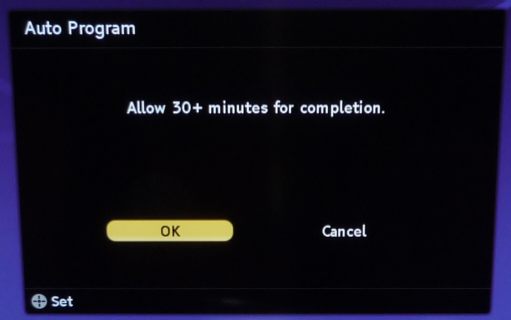
Now, you’ll have to put the TV in channel scan mode while touching the center conductor of the coax cable to something that is metal to act as an antenna. It’s best if someone else does it for you, or you can start the scan and quickly hold the coax to your improvised antenna. Don’t worry, on my TV it didn’t take 30 minutes. It took about 5-10 minutes.
Get whatever piece of wire that you’re using as an antenna, and touch the metal part to the center pin of the other end of the coax cable. Here is an example using a power cord:

Be sure not to touch the outer metal part of the cable to your improvised antenna, or else it won’t act like a good antenna. Only touch the center pin of the cable to your antenna!
One thing I should emphasize: the other end of the power cord should NOT be plugged into the wall or else you could shock yourself and damage your TV!! Just let the other end hang free, not plugged into anything.
Go ahead and kick off the scan while holding your improvised antenna to the coax cable. Most of the channels it found were at the end of the scan process, so don’t give up early!
Note, this is not intended as a permanent TV antenna solution, because someone will have to hold the cable while you watch TV! It’s just a test to see the minimum number of channels you can get so you can decide whether you want to try to get free broadcast TV. A real TV antenna will get you more channels.
The Results
If your TV found any channels during the test, congratulations!! You are a Cable Disabler!! You can receive broadcast digital TV for FREE!
The next step is to buy a real antenna. The setup above is just an experiment.
An outdoor antenna will get you the most channels. However, if you want to start with an indoor antenna, I recommend the Mohu Leaf (which is what I personally use).
Since this test uses a very crude antenna, you can will get significantly more channels if you go out an buy a real antenna like the Mohu Leaf. Even if you only got a few channels this way, it’s a good sign. Remember, this is just a quick and dirty “antenna” – it’s primitive and not ideal in any sense. It’s just a way to see if everything is working.
If your TV didn’t find any channels, all is not necessarily lost. You might be able to get some channels if you get a real indoor antenna (which costs $40 or so) or an outdoor roof/attic antenna. Check on my antenna section for more info on what types are available. But before buying, check the Station Finder to see what stations are available in your area.
Keep in Touch – Subscribe for Free
If you liked this article, please sign up for email updates. I’ll send you a note when I publish a new article, no more than once every few months. Unsubscribe any time. – Brian


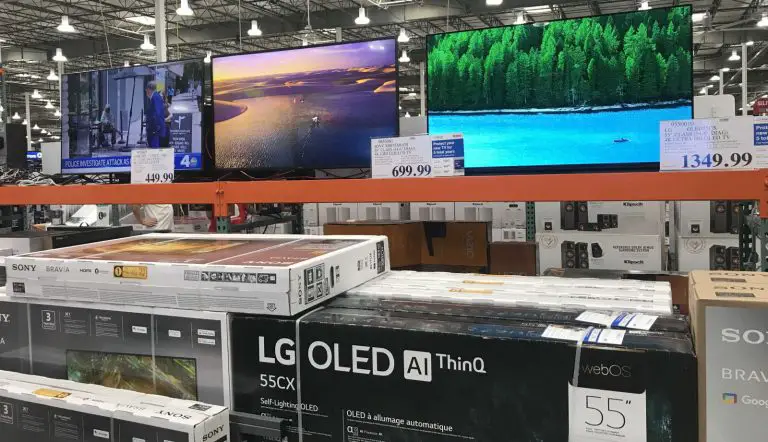
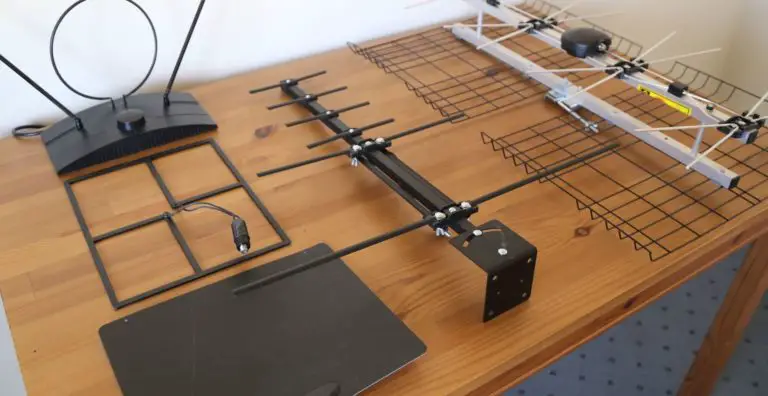
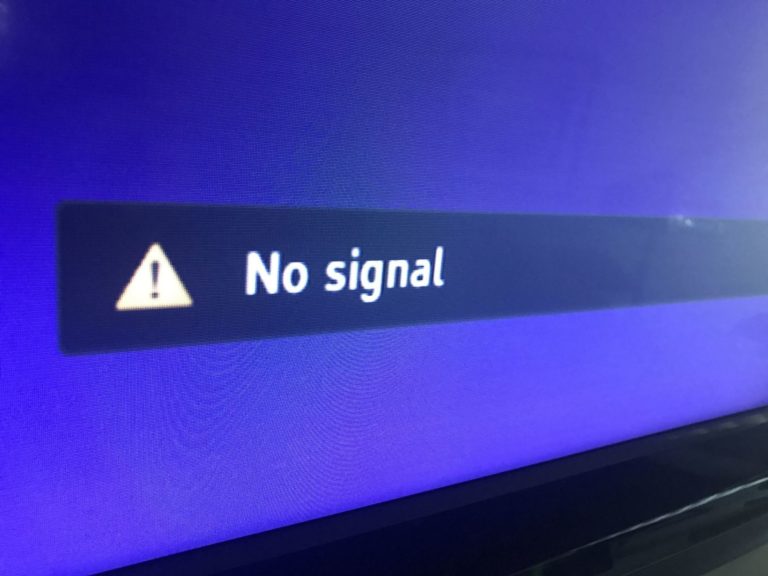

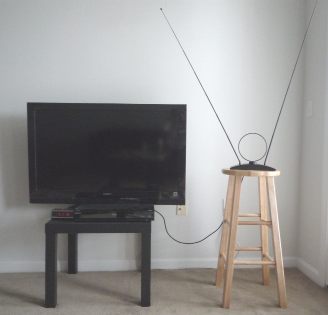
How do I hook an outside antenna to my tv? Can I use old cable ports?
Hi Kathleen,
Yes, you can use your old cable TV wiring as long as it is disconnected from any cable TV equipment/antennas. It’s the same type of cable as antenna cables.
Best,
Brian
, I have Roku connected to my TV. I screwed the antenna cable in. When I turn the TV on I just get the Roku set up. I don’t know how to get to menu.c
Hi Clare,
Roku and broadcast TV antenna don’t have anything to do with each other (unless you’re using a DVR app). Go to your TV’s settings and switch your input to Antenna, then do a scan.
Best,
Brian
I had to find an old remote that changed the input to “TV”. Then I could scan for channels.
if this meathod does not work does that mean the the tv is broken I was getting 30 channels yesterday. I started to watch roku then turned the set back to tv and there was no singal. then i went to the auto channel finder at it came up with no channels at all could it be the tv and is there any way to find out short of buyin g a new tv or antenna
Hi John,
Check out these possible causes of losing channels:
https://www.disablemycable.com/blog/broadcast-tv-channels-disappear/
Best,
Brian
Wow ! That power cord as antenna trick worked for me. Got around 60+ channels (some were watchable, not all) here in my North Jersey home. Just ordered an flat-type indoor antenna now. Thanks a lot !!
Hi Sudakar,
Great to hear that! Thanks for sharing!
Best,
Brian
I have a new indoor antenna. I scanned my channels and got 42 channels, most that are less than 20 miles. When I go to my Toshiba Fire TV, click on Live Tv and scroll down to Antenna, then click on a station I get a blank screen. I tried a total of 3 different antennas, 2 that I know worked before, and now they don’t. I made sure there was a good, tight connection on the Cable/Antenna and I plugged in the USB into the correct port on my TV. I have turned the tv off each time I installed the 3 different antennas, then I rescanned the channels both with the green light, then repeated above for yellow. I absolutely confused why I only get a blank screen. Streaming is working fine, it’s just when I try click on the channels I want and get nothing. Can you please help me?
Hi Shelly,
I don’t think it’s an antenna problem. Try doing a factory reset of your TV. You’ll have to go into your TV’s settings menu to find it.
Best,
Brain
Thank you Brian. I actually think it has to do with my inputs in settings. I had no inputs listed. I then I put in “Antenna”. Still can’t get anything.
I’m an older person so this is extremely frustrating for me.
Hi Shelly,
This is what I was able to find on an online manual for the Toshiba Fire TV (not sure if it’s the same model as yours though):
If you connected your TV to an antenna or cable wall jack, please complete the following steps:
https://manuals.plus/wp-content/sideloads/toshiba-toshiba-fire-tv-setup-guide-optimized.pdf
I have a cheap rotary ant on a 4 ft pole 3 ft fm the corner of my house. Going to raise it….so far I get 34 channels. Some are duplicated.
Hav another on my patio hooked to my kitchen tv..
Get 38 channels…again some are duplicated.
Was paying close to $100
For cable.. of course with an outside Antenna You…have to put up with commercials….
Tested it with a pole abt 10 ft clearing the roof….lol
Get over 68 ch.
But heres the catch….
A lot of them are duplicated….it says there’s a station ..but it doesn’t show it… haa…. im an ole Fart!…so as long as i get Grit!…ION…and local news, im good to go…
Beware!! This reception bounces off Station Antennas….so every now an then they rotate them …
So those who hav outside Antennas. Have to adjust..
For better reception…just to TICK U OFF…hay Who cares lol.. u still gind them and there are FREE!
Haha, thank you for sharing Daniel! – Brian
Enjoyed your article. We are SUNK, as far as OTA TV is concerned. We can only pick up one station, and its a PBS translator. Our other nearest transmitters are over 50 miles away, over mountainous terrain. I built a DB8 antenna, and…nothing. Our only choices here are the one cable company, satellite TV, or streaming(and the internet options here are highway robbery, as well). All I want is CBS, ABC, NBC, and FOX, and their subchannels(make that, Me TV). Any suggestions about this frustrating suggestion?
Hi Kenny,
Yeah, 50 miles is pretty far away for broadcast TV reception. Check with your neighbors to see if any of them can get channels.
I personally have had better luck with Yagi-style antennas rather than bowtie DB8-style. See the Winegards on this page:
https://www.disablemycable.com/antennas/
Put it up as high as possible and make sure it’s pointed in the right direction. Check the Station Finder to see signal strength and direction:
https://www.disablemycable.com/station-finder/
Best,
Brian
Thanks, Brian. Just no hope here. Only a few houses on top of tall mountains, have the biggest antenna Channel Master makes.
Why don’t you list the models/Brands of antennas that you tested “Some of the TV antennas I have tested” ?
I was looking at some of the outdoor antennas in the pic.
Thanks
Eli.
Hi Eli,
Here’s a rundown of the TV antennas I have tested:
https://www.disablemycable.com/blog/best-indoor-tv-antenna/
Best,
Brian
I believe I installed a few of these a few years back and had a lot of problems with them.
Had to rebuild the thing to get it to work right.
Let me know if you want to here more about it.
Otherwise, it should top your list ?
Hi Eli,
Sure, let me know which antenna worked best for you!
Thanks,
Brian
Brian,
Your best reception should come from the 4 bay ‘bow-tie’ shown on the right.
(which I don’t think are even available anymore from this manufacture).
** In an almost all UHF market, this should be your selection.
Worked great at first, then after a few months reception started to fade and become intermittent. Going up in the attic to investigate what I noticed is that all the connections were loose. Tightened them all up and the signal came back like it was of the first day after the install.
** Problem: The antenna is constructed from steel and aluminum parts !
Steel and Aluminum don’t work well together unless consideration is taken into account for the 2 dissimilar metals. If the metals are used outside in the elements, the metals must be separated by material to keep them apart (a.k.a. dielectric).
In the presence of aquas solution (a.k.a. water) the two will corrode. [my chemistry teacher from high-school used tell a story every year about a man that nailed up his aluminum gutters with steel nails and then couldn’t figure out why the following year his gutters fell off !]
In contact with each other as a mechanical connection, the aluminum has a high coefficient of change of size with temperature and over time will work its self loose (Known as ‘Creeping’). [This is why if you encounter aluminum wiring in older homes you are advised to get it out of there. The connections will loosen with time and cause the connection to arc. It’s this arcing that will burn your house down for you !]
(Yes, you can buy special receptacles and switches that are aluminum compliant and more expensive. But what about the guy doing work after yours that does not know this stuff !)
** Fix: (If your still reading …) I removed all the nuts, installed split-ring lock-washers. This provides some spring action, so if the aluminum expands or contracts the materials stay in contact. Replaced the nuts with wing nuts and then tied them down #18 steel wire (kind of like a home-made castle-nut) so there is no way for the nuts to work them selves loose w/o breaking the wire. (be careful not to short any of the conductors w/steel wire, in the case were this would happen I used zip ties)
* That was all about 7 years ago, still works great today.
* The cost of the antenna has been paid about 8x by not paying for cable.
Hope this helps.
Awesome, thanks for these tips Eli!!
Best,
Brian